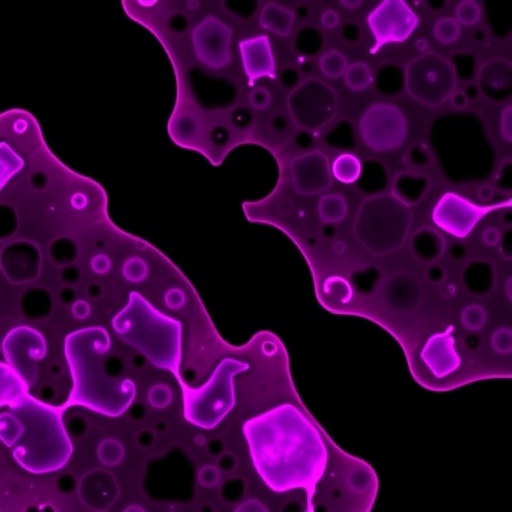PROTECT YOUR DNA WITH QUANTUM TECHNOLOGY
Orgo-Life the new way to the future Advertising by AdpathwayIn a significant advancement for sustainability and nutrient recovery, researchers have unveiled a groundbreaking technique aimed at extracting vital nitrogen and phosphorus from biogas slurry through a process that combines electrochemical struvite crystallization with modified zeolite adsorption. This interdisciplinary study led by Luo, Li, and Gu not only targets the efficient recovery of nutrients but also tackles the pressing issue of waste management associated with biogas production.
The research begins by highlighting the dual challenge faced by the biogas industry: the generation of nutrient-rich slurry as a byproduct and the environmental implications of excessive nutrient runoff. As biogas facilities generate substantial quantities of slurry, the need for effective nutrient recovery methods has never been more critical. The combination of electrochemical processes and traditional adsorption techniques presents a viable pathway to mitigate environmental risks while simultaneously reclaiming valuable nutrients.
Electrochemical struvite crystallization emerges as a pivotal process in this research. Struvite, a mineral composed of magnesium, ammonium, and phosphate, is known for its slow-release fertilizer properties. The electrochemical approach facilitates the precipitation of struvite from biogas slurry, enhancing the concentration of nitrogen and phosphorus available for recovery. This method not only increases the efficiency of nutrient extraction but also minimizes the energy demand typically associated with conventional crystallization processes.
In parallel, the modified zeolite adsorption serves as an effective complementary method to further concentrate the nutrients obtained from the electrochemical crystallization. Zeolites, with their unique porous structures and high cation exchange capacities, provide an ideal medium for capturing ammonia and phosphorous ions present in the slurry. The modifications made to the zeolite aimed to enhance its affinity for these nutrients, ensuring higher recovery rates. This synergy between the two methods maximizes overall nutrient extraction and exemplifies the innovative approach taken by the researchers.
The study meticulously details the experimental setup and the conditions under which both processes were optimized. By manipulating variables such as pH, current density, and contact time, the researchers achieved remarkable results that underline the scalability of the proposed technique. Initial tests indicate that nutrient recovery rates are significantly improved when employing the coupled approach compared to standalone methods. These findings portray a promising future where biogas slurry can be transformed from a waste problem into a valuable resource.
In addition, the implications of this research extend beyond immediate nutrient recovery. Effective management of biogas slurry can reduce environmental impacts, particularly the risks associated with eutrophication. The presence of excessive nutrients in water bodies can lead to harmful algal blooms, posing risks to aquatic ecosystems and human health. By recovering and repurposing nitrogen and phosphorus from biogas slurry, the research offers a twofold benefit: alleviating waste issues while promoting sustainable agricultural practices.
The significance of this study is further emphasized by the growing demand for environmentally friendly solutions in agriculture. As the world grapples with the challenges of feeding a burgeoning population, innovative approaches to nutrient management become paramount. The integration of advanced technologies, such as electrochemical processes and modified materials, represents a leap towards more sustainable agricultural practices. This research aligns with global efforts to close nutrient cycles, thereby promoting circular economy principles within the agricultural sector.
Moreover, the findings suggest that the production of struvite and the effective recycling of nutrients could lead to reduced reliance on conventional fertilizers. As the environmental footprint of synthetic fertilizers continues to raise concerns, the establishment of alternative nutrient sources is essential. By promoting the utilization of recovered struvite, farmers can benefit from a resource that not only meets their nutrient needs but also supports ecological balance.
Peer-reviewed journals and sustainability-focused publications are likely to prioritize this research in upcoming issues due to its comprehensive analysis and practical applications. The coupling of electrochemical struvite crystallization with modified zeolite adsorption presents a novel contribution to the field of waste valorization and nutrient recovery. This innovative approach could potentially attract the interest of policymakers, environmental organizations, and agricultural professionals seeking solutions for sustainable resource management.
As the research gains visibility, further discussions and explorations into the economic viability of scaling these methods will likely emerge. Potential partnerships between academia and industry may be fostered to facilitate the transition from laboratory results to practical implementations. The collaborative efforts could pave the way for innovative technologies that address nutrient recovery challenges on a larger scale, benefiting both the environment and the agricultural sector.
In conclusion, the research spearheaded by Luo and colleagues marks a significant milestone in the pursuit of sustainable nutrient management. The integration of electrochemical struvite crystallization with modified zeolite adsorption not only presents a technologically advanced solution but also supports a more sustainable approach to waste management. By reclaiming essential nutrients from biogas slurry, this study exemplifies the potential for technology-driven solutions to address global environmental challenges—offering a glimpse into a future where waste is minimized, and resources are efficiently utilized.
Integrating these advanced recovery methods into existing biogas infrastructure could ultimately lead to a large-scale impact, contributing towards the global goals of sustainability and resource efficiency. The ongoing discussions around this research will undoubtedly influence future studies and innovations, solidifying its place as a critical development in the field of waste biomass valorization.
With the incorporation of these techniques, the biogas industry may very well find itself at the forefront of the sustainable agriculture movement, championing the dual goals of waste reduction and nutrient reclamation. Such interdisciplinary research not only advances scientific knowledge but also aligns with the societal imperative for greener agricultural practices. The implications of this research extend well beyond the confines of academia, resonating with industry needs and environmental priorities alike, paving the way for comprehensive changes in how we view waste management in the context of nutrient recovery.
By optimizing the recovery of nitrogen and phosphorus through innovative methods, we stand at a pivotal crossroads in addressing global challenges associated with food production, environmental protection, and resource management. The exciting potential of the research conducted by Luo, Li, and Gu will likely inspire future innovations that bridge the gap between waste and resource within the biogas sector and beyond.
Subject of Research: Nutrient Recovery from Biogas Slurry
Article Title: Coupled Electrochemical Struvite Crystallization-Modified Zeolite Adsorption to Recovery of Nitrogen and Phosphorus in Biogas Slurry.
Article References:
Luo, X., Li, Z., Gu, Y. et al. Coupled Electrochemical Struvite Crystallization-Modified Zeolite Adsorption to Recovery of Nitrogen and Phosphorus in Biogas Slurry. Waste Biomass Valor (2025). https://doi.org/10.1007/s12649-025-03256-6
Image Credits: AI Generated
DOI: 10.1007/s12649-025-03256-6
Keywords: Nutrient Recovery, Biogas Slurry, Struvite, Zeolite Adsorption.
Tags: biogas industry challengesbiogas slurry managementeco-friendly nutrient recoveryefficient nutrient reclamation processeselectrochemical struvite crystallizationenvironmentally-friendly fertilizer productioninterdisciplinary research in sustainabilitymodified zeolite adsorptionnitrogen extraction techniquesnutrient runoff reduction strategiesphosphorus recovery methodssustainable waste management solutions


 2 hours ago
9
2 hours ago
9




















 English (US) ·
English (US) ·  French (CA) ·
French (CA) ·